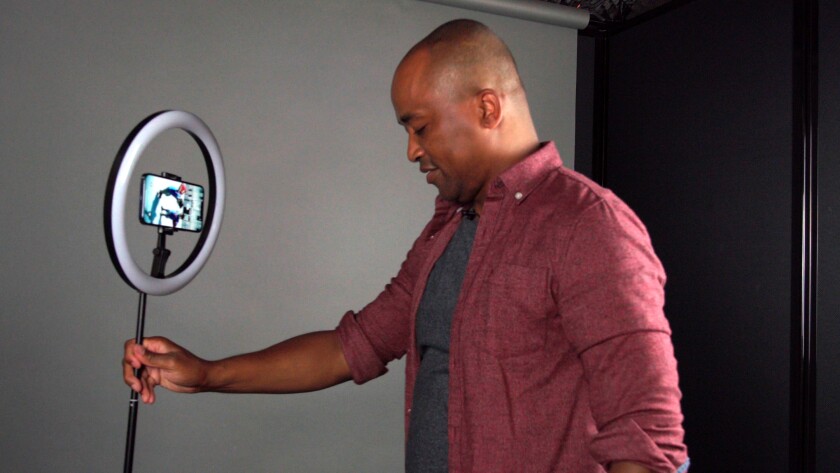Ring of power: Actor DaJuan Johnson sets up a ring light with a stand and holder for his phone in preparation for a self-tape audition.
(Screen capture by Cody Long / Los Angeles Times)
“The larger the light source, the closer to your face, the better,” said Seth Caskey of Elizabeth Barnes Casting. And, he said, if you don’t have a fancy setup with softboxes and bounce cards, don’t worry about it: “Use natural, even lighting.”
Windows often work well, depending on the weather and time of day, but if you don’t have a usable one in the room where you want to shoot, those now-ubiquitous ring lights do the trick.
Ring lights
Ring lights with full-size stands can typically be found online for $22 to $30.
Ring lights with clips or desktop stands (often called “video conference lighting kits”) can be found in the $9-$20 range.
DaJuan Johnson, an actor, self-tape coach and founder of Think Bigger Coaching, uses a ring light that comes with its own stand and phone holder in the middle. When you’re done shooting, it folds down into a lightweight, compact, flat circle. “That’s perfect,” he said. “That’s all you need.”
Caskey said to avoid the little zombie circles ring lights can make in your eyes by turning the ring light away from you to use the wall behind the camera as a “bounce” — which can also help to make the light source seem larger. Of course, you’d need, ideally, a white or brightly colored wall to pull that off.
Just make sure the dominant light source is in front of you and behind the camera. If it’s a window, make sure most of the light isn’t coming from behind you.

